Just like facial acne, back acne (‘bacne’) can be frustrating and disappointing. There also seems to be a stigma attached to back acne, as many find it to be more of an unusual and embarrassing area to experience breakouts. But friends, we’re here to tell you that back acne is totally normal and extremely common. So today, we’re shedding some light on this spotty subject to help you understand what bacne is, the types of back acne that exist, and how to prevent it from forming and/or worsening.
What is Bacne?
While bacne is acne that can form on your upper and lower back, it’s common for this kind of acne to pop up on your shoulders and upper arms. And while facial and back acne occur in two different areas, the types of acne that can appear are the same. We covered the six types of non-inflammatory (doesn’t cause swelling) and inflammatory (causes swelling) acne not long ago but in case you missed it, you can read all about it here, as it’ll help you determine the type(s) of back acne you’re experiencing. But whatever the type of acne, a buildup of debris, oil, and dead skin cells is usually to blame. Want to know how to prevent back acne from forming and/or worsening? Keep reading!
Tips to Prevent Bacne
Choose Topical Products with Acne-Fighting Ingredients
When your acne-fighting products are ready to get the job done…
Salicylic acid. Niacinamide. Benzoyl peroxide. Retinol. These are some of the most notable acne fighters and ones you should be keeping an eye out for in the ingredient labels of skincare products. With that said, look at your current body wash and/or bar of soap. If none of the above-mentioned ingredients are on its bottle or package, chances are it ain’t doing squat for your back blemishes and is most likely adding to your acne.
Also keep in mind that the items or devices you use to work your products into your shoulders and back can be causing harm. Germs, grime, and everything in between can often be found lingering in standard shower loofahs and sponges waiting to pounce on your at-risk skin. The alternative? Opt. for textured bath gloves, silicone exfoliators, or gentle wash cloths, which can be sanitized with rubbing alcohol or thrown into your laundry machine to remove all the dirt and oil they’ve collected during recent scrub-a-dub-dub sessions.
Remove Gym Clothing Immediately Post-Workout
Working out is great for keeping your body and skin healthy, but what isn’t great is staying in your soiled gym clothes (that includes sports bras and underwear, too) for hours on end post-workout, especially if you already battle bacne. Bacteria thrives on sweaty skin and can contribute to blackheads, pustules, and a whole lot more, so if you’re thinking you can go for a grocery run or unload the dishwasher in your sweaty apparel, don’t. Your skin will thank you. Another thing to keep in mind is the type of clothing you wear during your workouts. Whether it’s a five-minute squat session or a 30-minute leg pump, wearing loose-fitting clothing is not only more comfortable but also kinder to skin.
Refrain from Picking at Skin
Picking at acne lesions even with sanitized, tissue-wrapped fingers?
We know it’s easier said than done, but do not, under any circumstances, poke and pick at your breakouts, as this can lead to infection and/or scarring. How? When you pop a pimple (sounds unappealing, we know), you chance the bacteria in that pimple to spread to other areas of skin. It also delays your body’s natural response to healing acne, further prolonging the amount of time this unfriendly visitor stays on your skin. Instead, apply a spot treatment that contains salicylic acid for pesky blackheads and whiteheads and stick to benzoyl peroxide for pustules and any other inflammatory acne. But do keep in mind that the latter tends to be drying, so following up with a hydrating, non-comedogenic moisturizer is key, which brings us to our next bacne tip…
Opt. for Non-Comedogenic Body Moisturizers
While some advise to refrain from moisturizing this area of the body, we’re here to tell you that it’s certainly fine to do so, if the creams or lotions you’re using aren’t too thick in consistency and are non-comedogenic, meaning they won’t clog pores. Opting. for moisturizers that’re lighter and free from heavy oils and multiple fragrances will not only help restore your skin’s moisture barrier but will also prevent any bacne from forming and/or worsening. If you’re wanting to make the switch to a back-friendly body cream or lotion (but do keep in mind that creams generally are thicker than lotions), you can check out some options here.
Seek Advice from a Dermatologist
That moment when you’ve had enough and ask a licensed professional for guidance…
Mild to moderate acne can usually be treated at home with the use of over-the-counter topical products, but if your back acne is more severe and cystic-like, consulting a dermatologist is best, as you may need stronger prescribed products or even medication to help. You may think your skin is simply dry and irritated, but after visiting a derm, you may find out that you have a more acute skin condition. Sometimes, what you think you’re experiencing may not be what you’re experiencing after all, so getting a second opinion doesn’t hurt.
The Bottom Line
Whether it’s facial acne, bacne, or buttne (yep, that’s also a thing), acne happens and affects people of all ages. And while it’s easy to layer on acne-fighting products and pray for a better outcome, it’s important to keep in mind that fluctuations in hormones and insufficient cleansing aren’t the only factors that can trigger breakouts. With that said, we hope this post has helped you understand what back acne is and how to prevent it from reoccurring. Until next time, friends!

